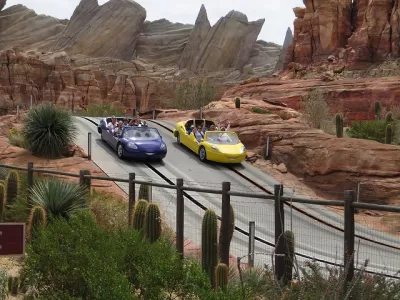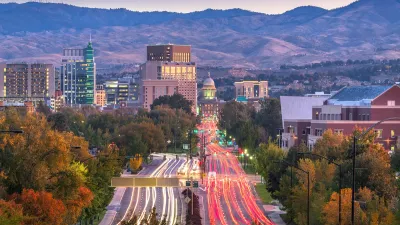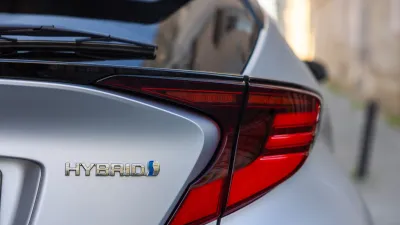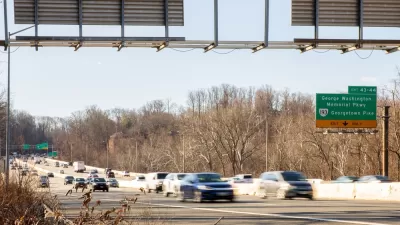While endeavoring to make an honest account of the motivations for driving, it's important to remember that some people really like to drive.

There's an omnipresent Audi commercial where the protagonist "David," obviously living in the future, waxes nostalgic with an A.I. named "Clara" about how driving used to be, before self-driving cars. "Driving wasn't just about being taken from place to place, but going somewhere—feeling something along the way."
Perhaps what David is talking about is the "Joy of Driving," which is far more prevalent a driver of, um, driving than might always be represented in the public discussion about transportation.
Jenna Fortunati, writing for Mobility Lab, has gathered a collection of research on the subject, noting first that researchers acknowledge three motives for driving: instrumental, affective, and symbolic. Fortunati explains the work of a team of researchers at the University of Groningen, who surveyed car commuters in Rotterdam about their motivations for driving—along the lines of the three kinds of motivations mentioned above.
“People more often commute by car when they judge its symbolic and affective functions more favorably,” Steg writes. “Even commuter traffic, which may be considered highly functional, is most strongly-related to non-instrumental motives.”
Other researchers have found similar evidence of driving for the joy in driving. Another study describes the feeling of "carcooning," or turning your car into a relaxation zone.
Fortunati makes no secret that Mobility Lab's interest in understanding these motivations is to provide alternatives to driving, writing: "So how can transit agencies compete? I’m not sure. But understanding this is important, because if we don’t understand why people might like to drive, we can’t reduce the amount of cars on the road – and create a transportation network that is sustainable and works for everyone, not just drivers."
And to make sure the lesson about the joy of driving sticks, here's another paean to cars and driving for the road, from the move Rush (2013).
FULL STORY: How much does the “joy of driving” affect people’s decision to drive?

Alabama: Trump Terminates Settlements for Black Communities Harmed By Raw Sewage
Trump deemed the landmark civil rights agreement “illegal DEI and environmental justice policy.”

Study: Maui’s Plan to Convert Vacation Rentals to Long-Term Housing Could Cause Nearly $1 Billion Economic Loss
The plan would reduce visitor accommodation by 25% resulting in 1,900 jobs lost.

Planetizen Federal Action Tracker
A weekly monitor of how Trump’s orders and actions are impacting planners and planning in America.

Waymo Gets Permission to Map SF’s Market Street
If allowed to operate on the traffic-restricted street, Waymo’s autonomous taxis would have a leg up over ride-hailing competitors — and counter the city’s efforts to grow bike and pedestrian on the thoroughfare.

Parklet Symposium Highlights the Success of Shared Spaces
Parklets got a boost during the Covid-19 pandemic, when the concept was translated to outdoor dining programs that offered restaurants a lifeline during the shutdown.

Federal Homelessness Agency Places Entire Staff on Leave
The U.S. Interagency Council on Homelessness is the only federal agency dedicated to preventing and ending homelessness.
Urban Design for Planners 1: Software Tools
This six-course series explores essential urban design concepts using open source software and equips planners with the tools they need to participate fully in the urban design process.
Planning for Universal Design
Learn the tools for implementing Universal Design in planning regulations.
Caltrans
Smith Gee Studio
Institute for Housing and Urban Development Studies (IHS)
City of Grandview
Harvard GSD Executive Education
Toledo-Lucas County Plan Commissions
Salt Lake City
NYU Wagner Graduate School of Public Service





























